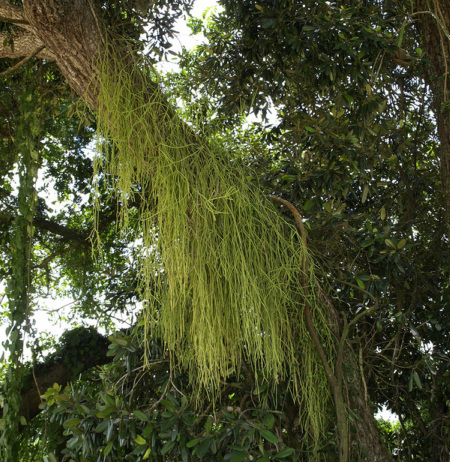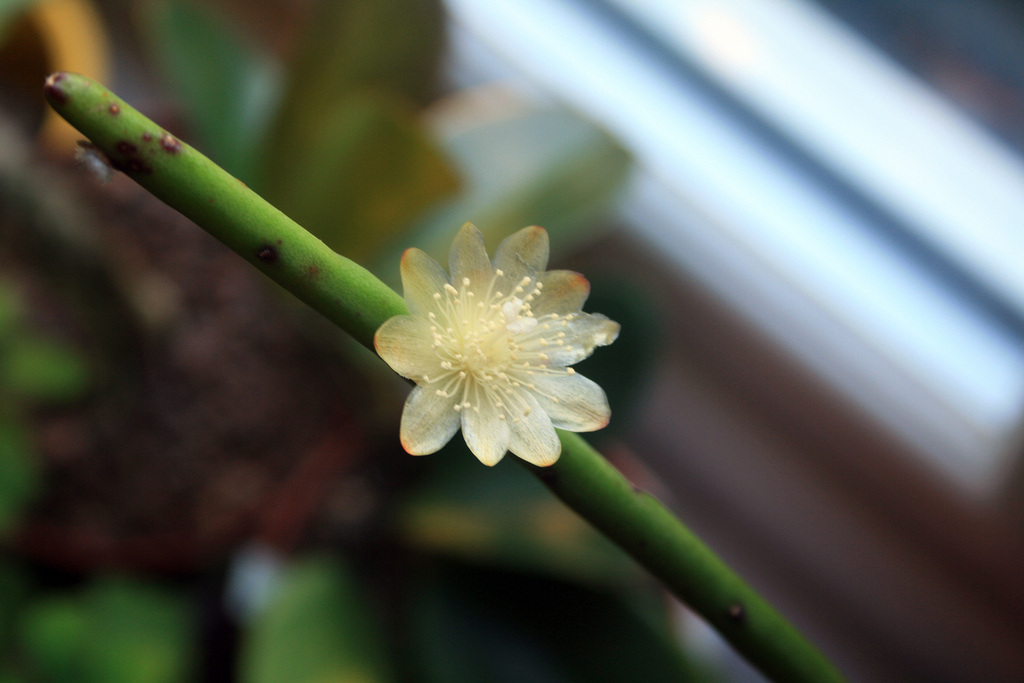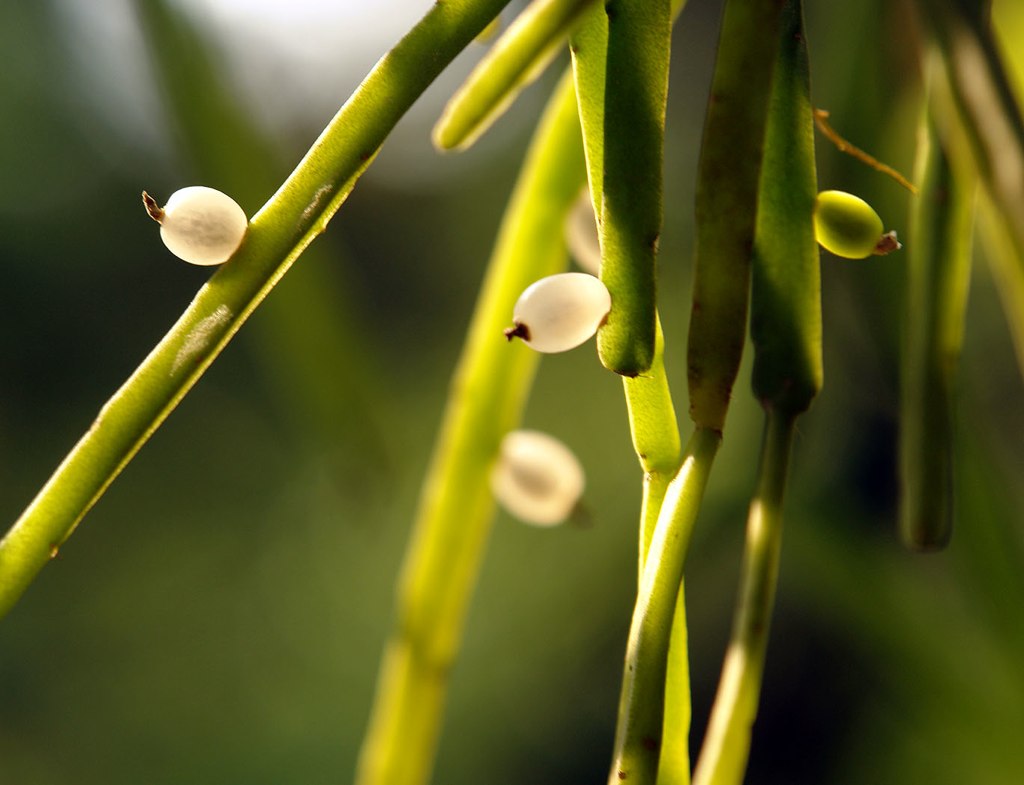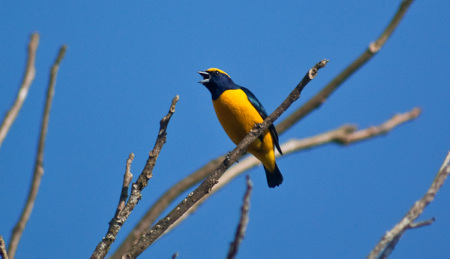Forget what comes to mind when you imagine a cactus because the cacti of tropical Americas do not grow in sand nor do they have large spikes. Species such as those belonging to Rhipsalis grow as epiphytes and have long leaves without any spikes. They also have tiny flowers and fruit that emerge from the leaves.
|
The epiphytic flora of New Zealand has interesting similarities with the epiphytes of tropical rainforests. For example, we have diverse epiphytic species that belong to many different plant groups: ferns, orchids, shrubs etc. However, these groups of plants also have stark differences and today's example is the cacti! Forget what comes to mind when you imagine a cactus because the cacti of tropical Americas do not grow in sand nor do they have large spikes. Species such as those belonging to Rhipsalis grow as epiphytes and have long leaves without any spikes. They also have tiny flowers and fruit that emerge from the leaves. Species of Rhipsalis are thought to have specialist relationships with one group of tropical birds. A recent study by Guaraldo and colleagues compared the requirements for Rhipsalis seed germination to that of mistletoes; a plant group that is considered to rely on specialist dispersers. Both of these plant groups have sticky seeds that are most successful if they are stuck in the fork of a large branch with suitable bark. Species of Rhipsalis are even known as "mistletoe cactus" because the fruit are so similar. Interestingly, the seeds of Rhipsalis and mistletoe species are both primarily distributed by Euphonia birds. These birds do a good job of establishing sticky seeds because they smear the seeds onto a host branch rather than dropping them, providing a much better chance for establishment. New Zealand's epiphytic flora does not have any cacti species, nor any known specialist bird relationships. We do know that some mistletoe species rely on tui and bellbirds for pollination and that the woody vine kiekie might have had a relationship with bats in the past (before they were lost from many areas) but these plants aren't epiphytes - maybe epiphytes like the Pittosporum shrubs species have (or had) important relationships with fauna, it is after all still unclear how their seeds are dispersed. Is anyone out there looking for a research topic?!
4 Comments
24/8/2013 05:59:52 pm
Fantastic info! Hadn't heard of such a thing, so very cool to learn.
Reply
Angela Simpson
27/8/2013 06:50:21 am
Interesting post! Cacti and epiphytes both use alternate variations in photosynthesis (C4, CAM) to conserve water... when combined as epiphytic cacti could we expect these plants are even more efficient at water use?
Reply
Catherine Kirby
29/8/2013 06:58:36 am
Yes good point! These epiphytic cacti are very efficient water users not only because of C4 and CAM photosynthesis but also because they can store a lot of water in their fleshy leaves.
Reply
Gerhard
17/10/2013 10:28:51 pm
There are no C4 epiphytes nor C4 cacti as far as we know (e.g. Sage JExpBot 2011). By the way, although virtually all derived forms of Cacti are CAM, at least a few Rhipsalis species are C3. You find them as epipyhtes in very wet Atlantic Rainforests of Brasil.
Reply
Your comment will be posted after it is approved.
Leave a Reply. |
Subscribe to NZ Epiphyte Blog:Like us on Facebook!
Catherine KirbyI work with NZ's native vascular epiphytes at the University of Waikato. I completed an MSc on epiphyte ecology and the shrub epiphyte Griselinia lucida and have recently published the Field Guide to NZ's Epiphytes, Vines & Mistletoes. Categories
All
Archives
August 2016
|





 RSS Feed
RSS Feed
